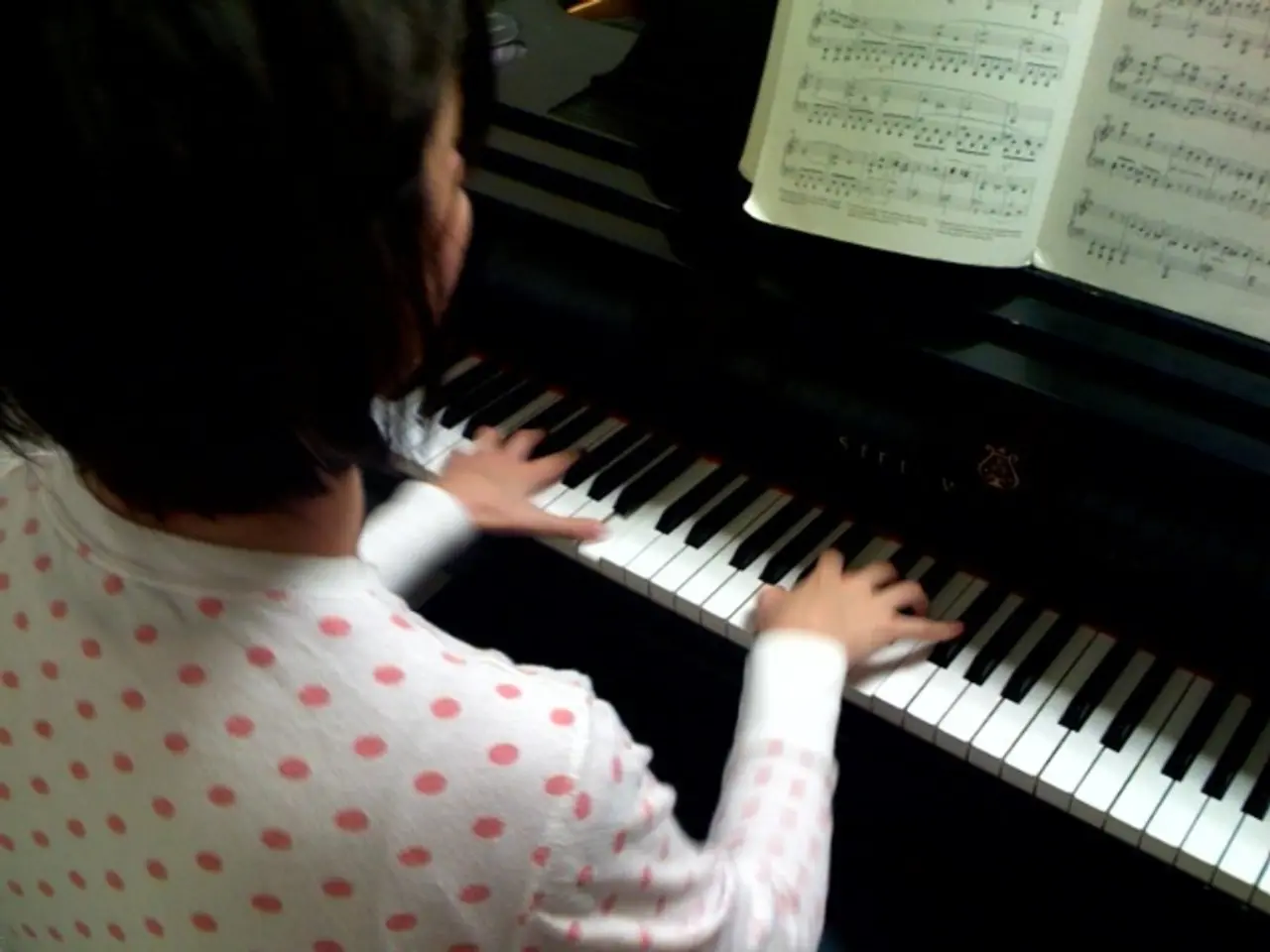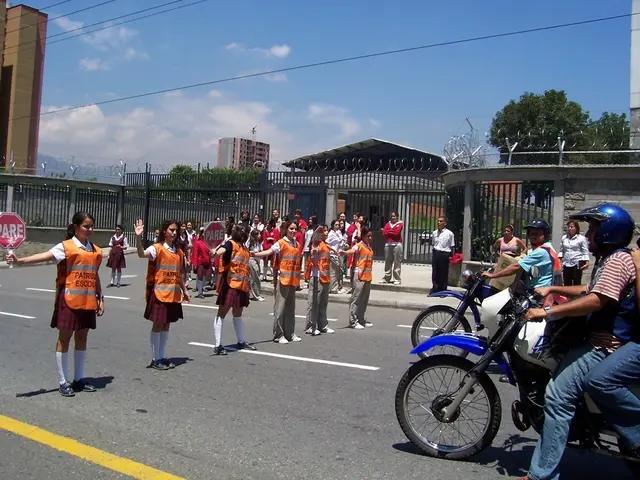Analyzing Rhythms in Piano Compositions: Discovering Intricate Hidden Patterns in Syncopation
In the world of piano music, syncopation - a rhythmic surprise that displaces expected beats with unexpected accents or held notes - has played a significant role in shaping the art form. This article delves into the historical use of syncopation in pedagogical piano repertoire, showcasing various examples and the pedagogical value they offer.
One of the most notable examples is Claude Debussy's 'Golliwogg’s Cakewalk' from his collection 'Children’s Corner'. This piece, characterised by strong linear syncopation, is frequently included in advanced intermediate piano collections. It teaches students to feel and express off-beat accents, with the left hand providing a steady accompaniment while the right hand plays syncopated, ragtime-influenced melodies.
Another piece from Debussy's 'Children’s Corner', 'Serenade for the Doll', features light, elegant syncopation in the melody with a clear meter. This piece is beneficial for teaching students to handle syncopation within a transparent texture.
Jazz and Latin-inspired works, such as *The Latin Side of McCoy Tyner* (arrangements by Conrad Herwig) and compositions by Wayne Wallace, highlight complex syncopation. Although these are often used in higher-level pedagogy or jazz studies, they serve as valuable resources for those seeking to master complex rhythms.
Syncopation is also prevalent in stride piano and ragtime pieces by composers like Scott Joplin. These works, while not always labelled as pedagogical, are used to teach syncopation, with the left hand's stride patterns interacting syncopatedly with the right hand's melodies, exemplifying both linear and vertical syncopation.
In addition to these examples, Czerny, a pedagogue in the early 19th century, included dedicated studies of syncopation in his educational opus, such as Exercise No. 53, "Syncopation", which is explicitly designed to familiarize the student with off-beat rhythms.
Syncopation is a feature of music for centuries, appearing across many styles such as Renaissance choral music, African and jazz rhythms, and classical compositions. Understanding these concepts and their manifestations requires a brief definition:
- **Linear (Horizontal) Syncopation**: Refers to the displacement of rhythmic accents across a melodic line, disrupting regular metric expectations. - **Vertical Syncopation**: Involves rhythmic displacement between voices (such as the bass and treble in piano music), creating a "polyrhythmic" effect or a temporary dissonance between hands.
These examples illustrate how both linear and vertical syncopation have been integrated into piano pedagogy, from classical masterworks to adaptations of jazz and Latin styles. Syncopation studies serve as a bridge between music theory and practice, encouraging students to analyze the music's structure and connect theoretical knowledge with practical execution.
From the Baroque period to contemporary times, syncopation has served several core educational purposes, such as internalising a steady pulse, developing hand independence and coordination, improving rhythmic reading and precision, fostering dynamic emphasis and articulation, exposing students to stylistic rhythms, problem-solving and focus, and integrating rhythmic understanding into the broader musical comprehension.
References: 1. Herwig, C. (Arranger). (2014). The Latin Side of McCoy Tyner. Mack Avenue Music. 2. Schonberg, F. T. (2018). The Great Pianists: The First Hundred Years, 1828-1939. Oxford University Press. 3. Wallace, W. (2003). Afro-Cuban Jazz Piano. Alfred Music Publishing.
- Piano lessons often incorporate pieces from various styles, such as Debussy's 'Golliwogg’s Cakewalk' and 'Serenade for the Doll', to help intermediate students understand and express linear syncopation.
- For those seeking to master complex rhythms, jazz and Latin-inspired works like The Latin Side of McCoy Tyner and compositions by Wayne Wallace offer advanced syncopation patterns essential for higher-level pedagogy and jazz studies.
- Syncopation is not limited to piano music; it can be found in various genres like Renaissance choral music and African rhythms, providing entertainment while promoting education-and-self-development through internalizing a steady pulse and improving rhythmic reading and precision.
- While Debussy's works and jazz adaptations may challenge beginners, educators like Czerny in the early 19th century have designed pedagogical pieces, such as Exercise No. 53, 'Syncopation', to help students grasp off-beat rhythms and synchronize theoretical understanding with practical execution.
- Syncopation in music serves diverse purposes in education, fostering hand independence, dynamism, and stylistic rhythms while cultivating problem-solving and focus, ultimately enriching an individual's musical comprehension and enjoyment of entertainment across genres.




